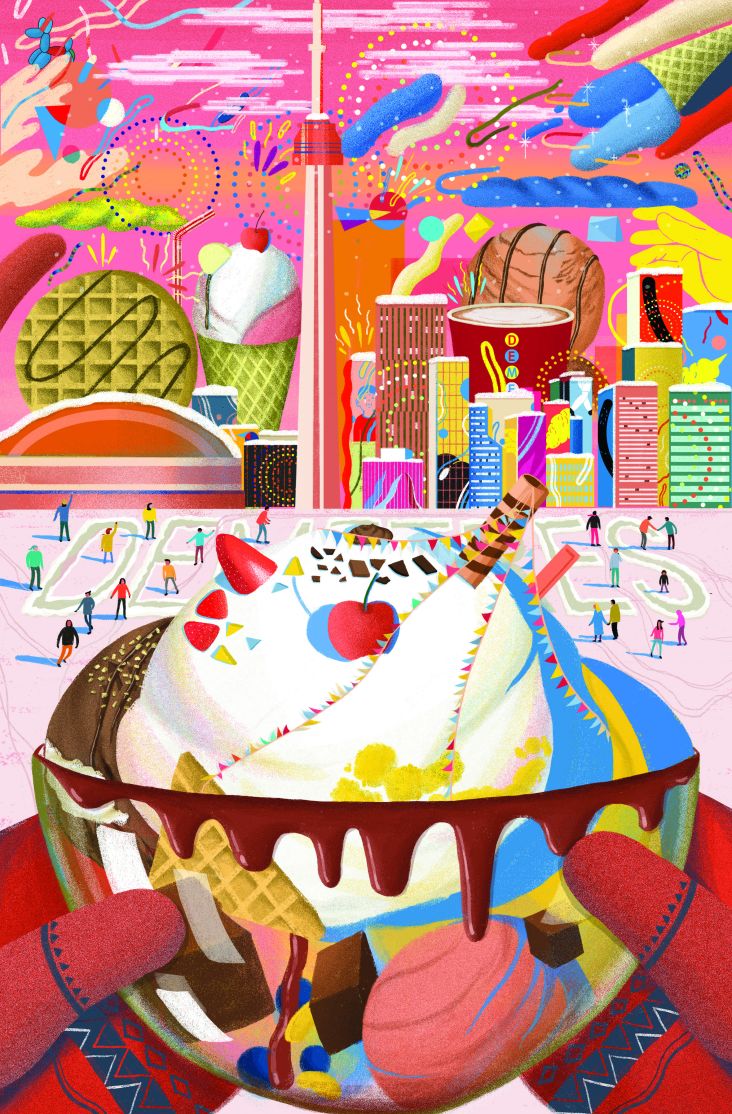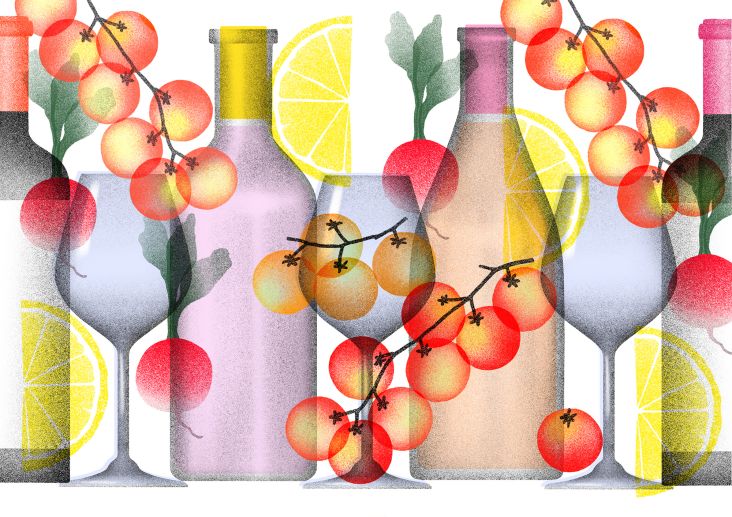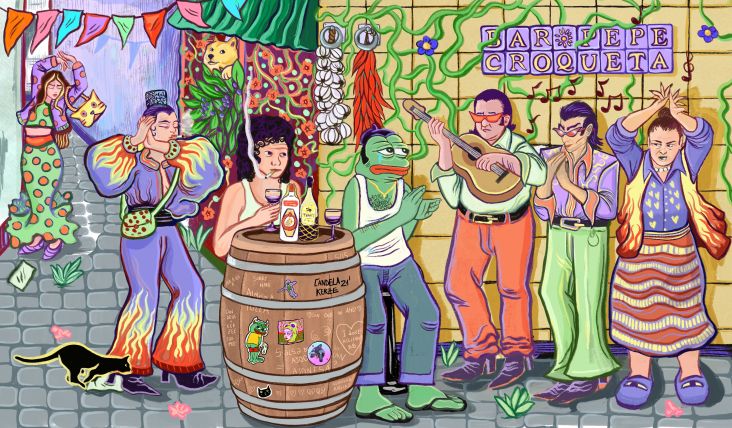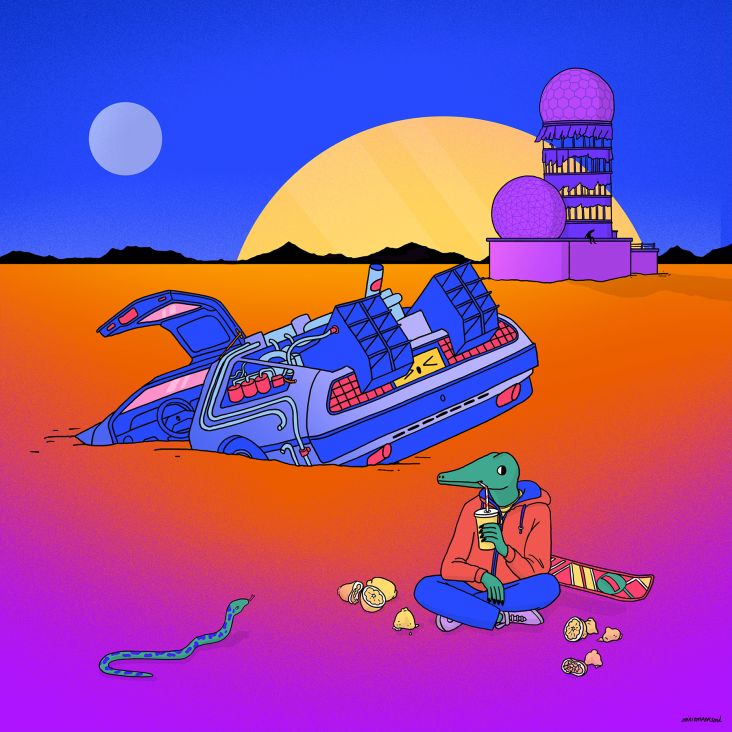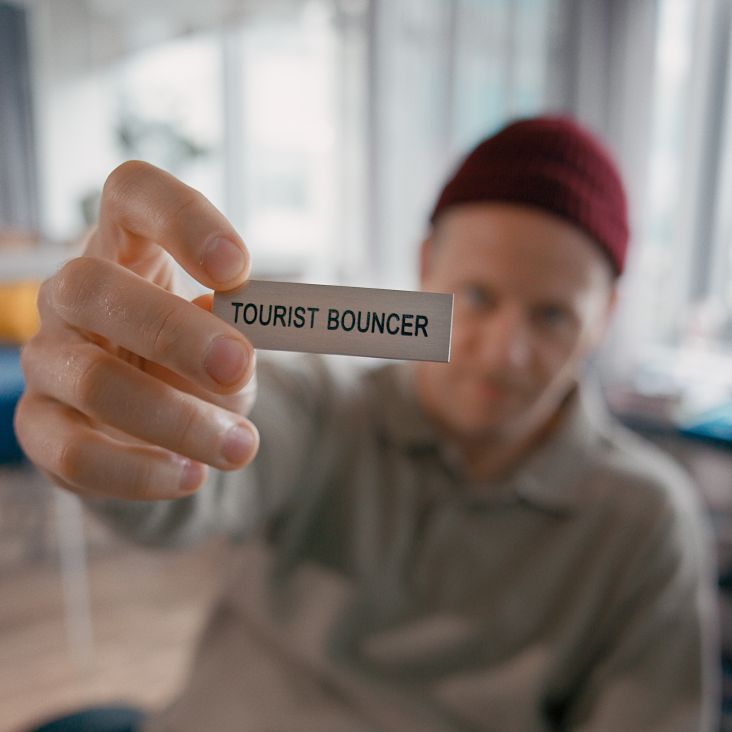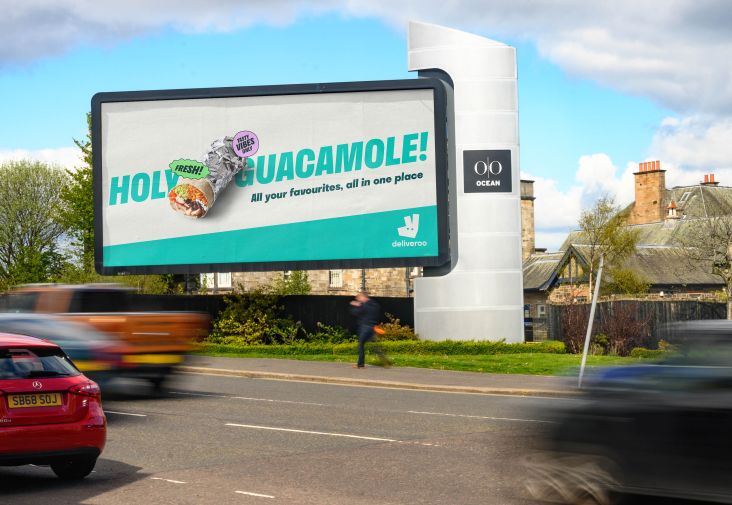Hanneke Rozemuller constructs dreamy, textural scenes as a way of making sense of the world
One glance at Hanneke Rozemuller's portfolio, and you'll stumble upon a sea-blue scene with cloud-like textures reminiscent of a dream, a floating figure appears surrounded by thought bubbles.
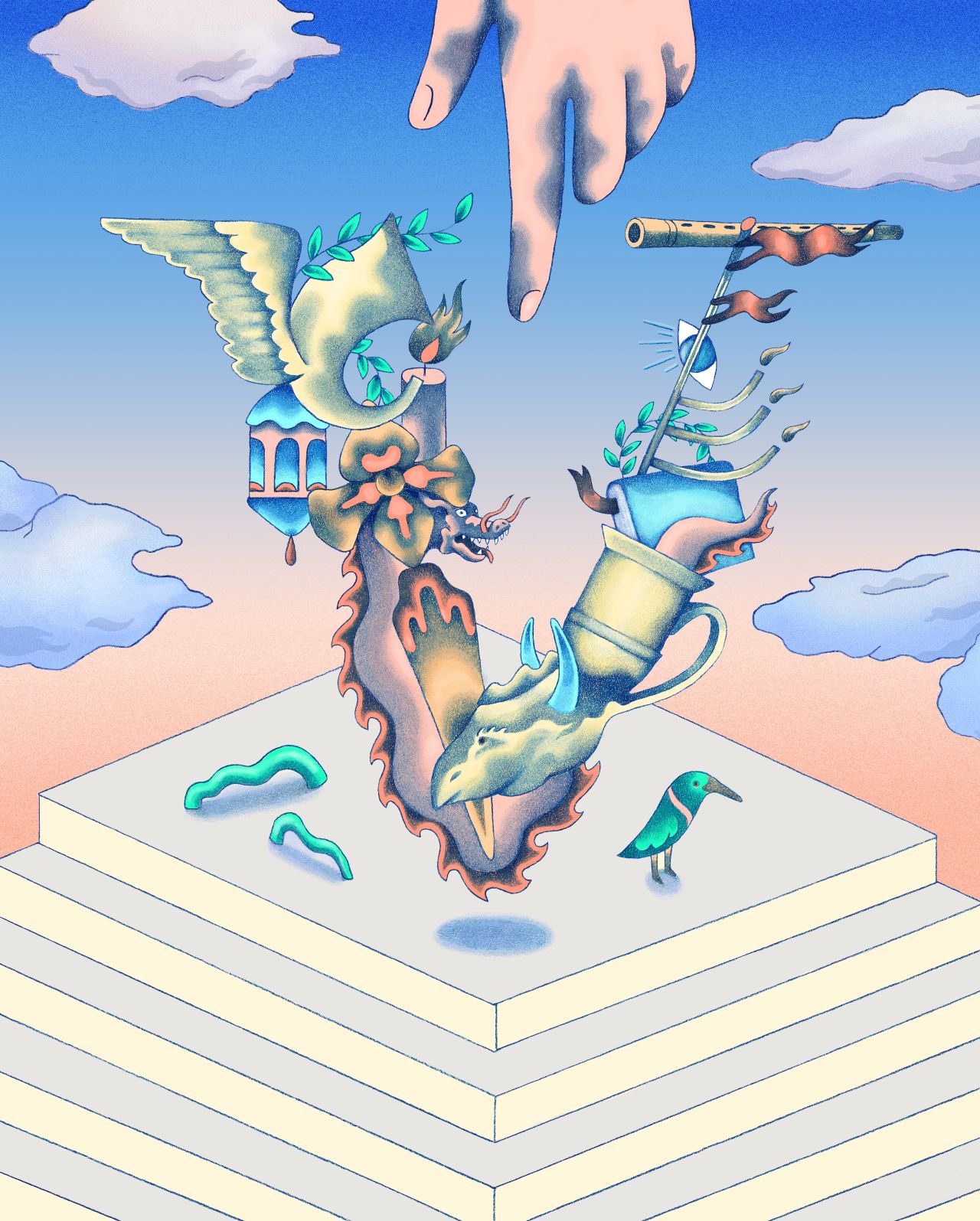
Music notes are dotted everywhere, and there's an artwork, film clapper, camera, ballet shoes and sun beaming through a window – assumedly the protagonist's interests, hobbies or something they'd like to pursue. The piece is textured and beautifully nonsensical for the way it merges motifs and objects into a rosy, hypnagogic drawing. It's also very Hanneke.
In Hanneke's world, the illustrator pulls inspiration from the mysteries surrounding us – addressing topics such as "psychology, religion, love, nostalgia, philosophy, absurdism, disconnection and finding your way back", as written in the artist's bio. With a hint of humour, these topics are transformed into dreamlike scenarios where objects fly, and people appear lost in a trance. It appears that Hanenke uses these works to map out her thoughts on life, placing her experiences, fears, enjoyments and hopes onto the page to better understand them. Art has been known to bear many remedial qualities, after all.
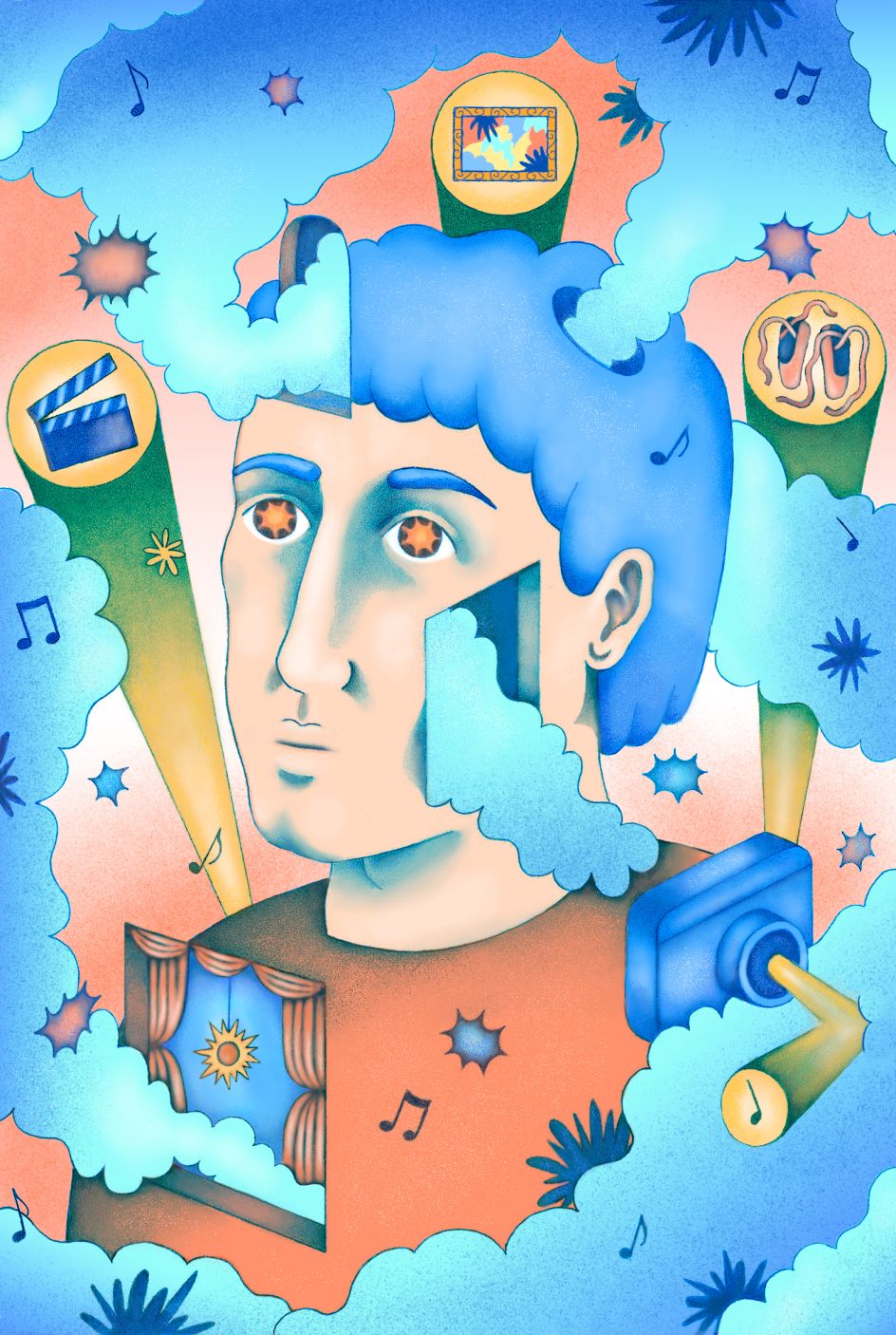
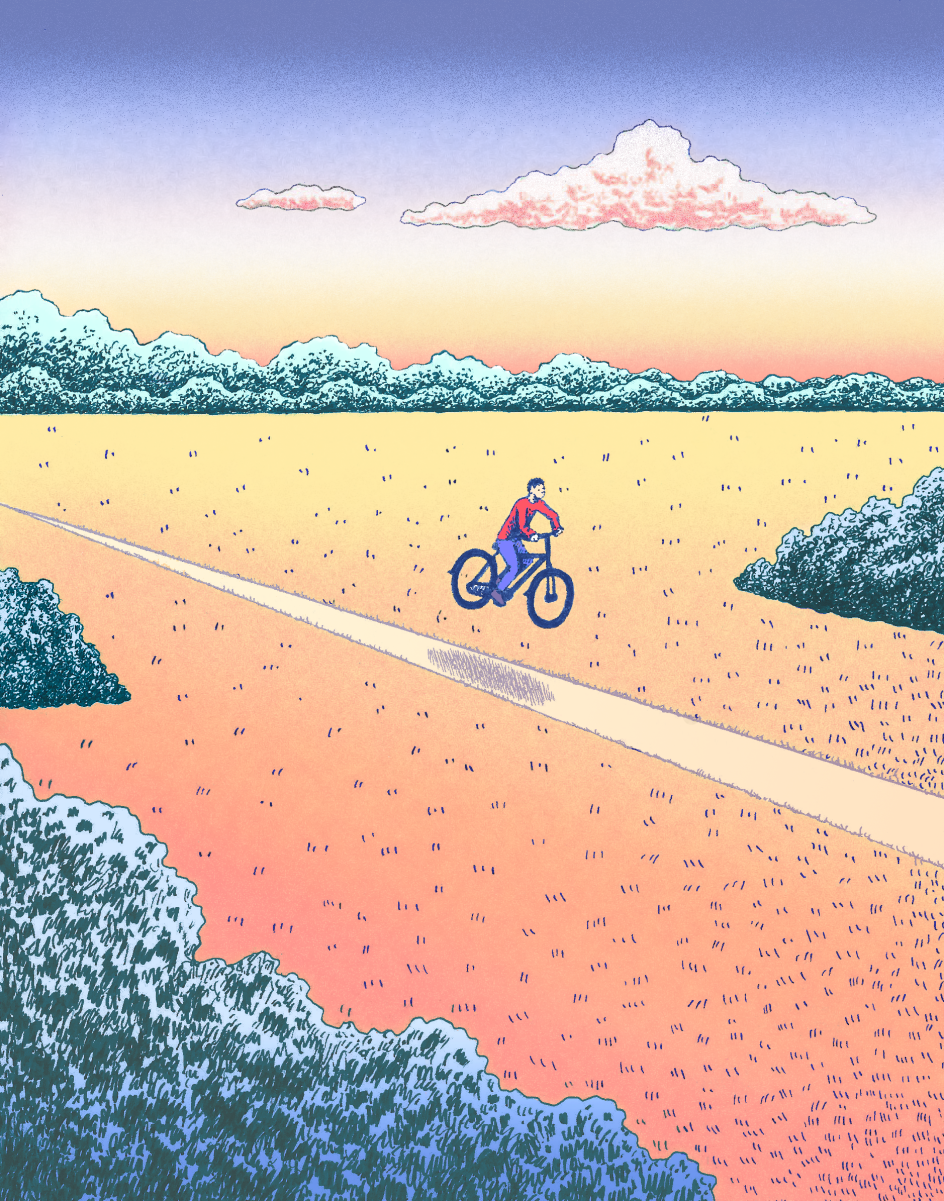
Hanneke grew up in the small village of Groningen, based in the north of the Netherlands, known for rural farmland. When choosing a subject to study, she decided history was the better and more "secure" choice –" which is funny" – only to discover it wasn't the right path for her. "In that situation, it felt like I got the 'permission' to try art school, and I've been grateful ever since." She studied illustration at the HKU University of the Arts in Utrecht, graduated two years ago, and has since worked as a freelancer.
Many will agree that the more you surround yourself with art, the more you become inspired. Hanneke cites other illustrators and artists as her main creative source and regularly scours Instagram to see "where the magic already happens". This enables her to spot gaps and carve out her own path from what's been done. Besides that, '70s American poster design by Milton Glaser is another key influence, as well as artists like Escher or Magritte, as well as illustrators Olivier Schrauwen and Antoine Cossé. "They both have an anarchistic approach that I really love, though you also see a lot of craftsmanship in their drawings and the way they arrange their stories."
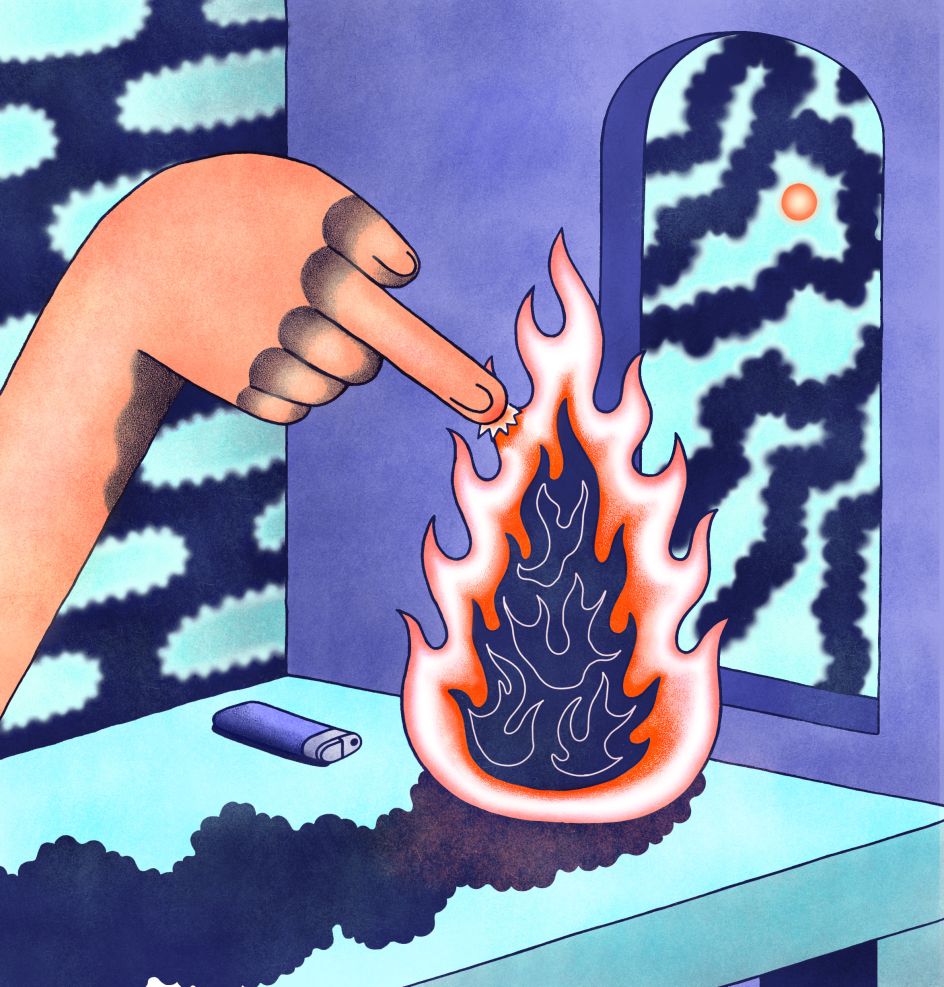
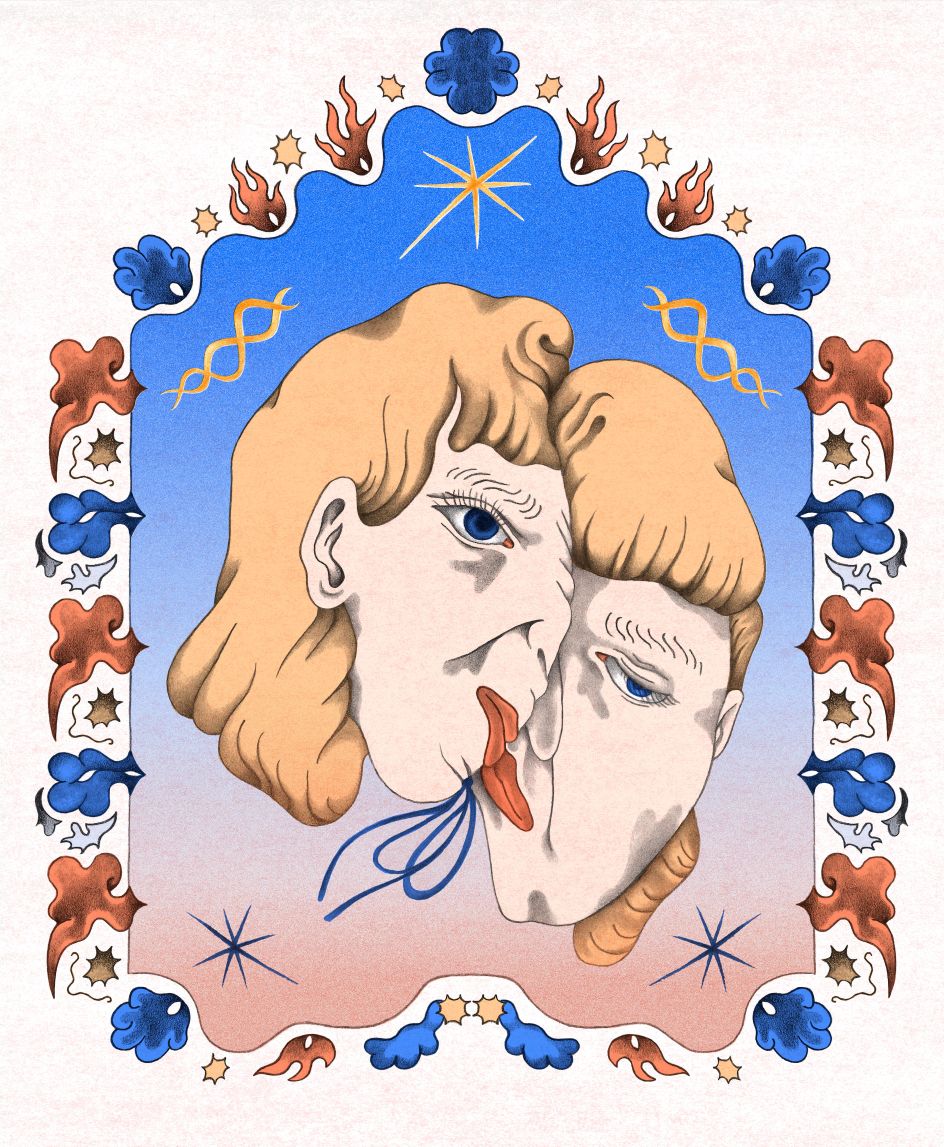
This attention to craft and storytelling appears greatly throughout Hannecke's creations. In one image, splashed in greys, purples and reds, a head is disfigured behind a sand timer. It's a particular favourite of hers for the way it came together. "The process of making it was so natural, as though it simply flowed out of me, and it was just sitting inside me, waiting to be made," she says.
In another, an anthropomorphic border encrusts a twilight sky and two identical heads melting into each other, with strange, distant expressions on their faces. The piece merges different visual elements that Hanneke is especially fond of. "This combining of themes is usually something that just happens and isn't necessarily well thought-out, though afterwards, I can see what the influences were," she says.
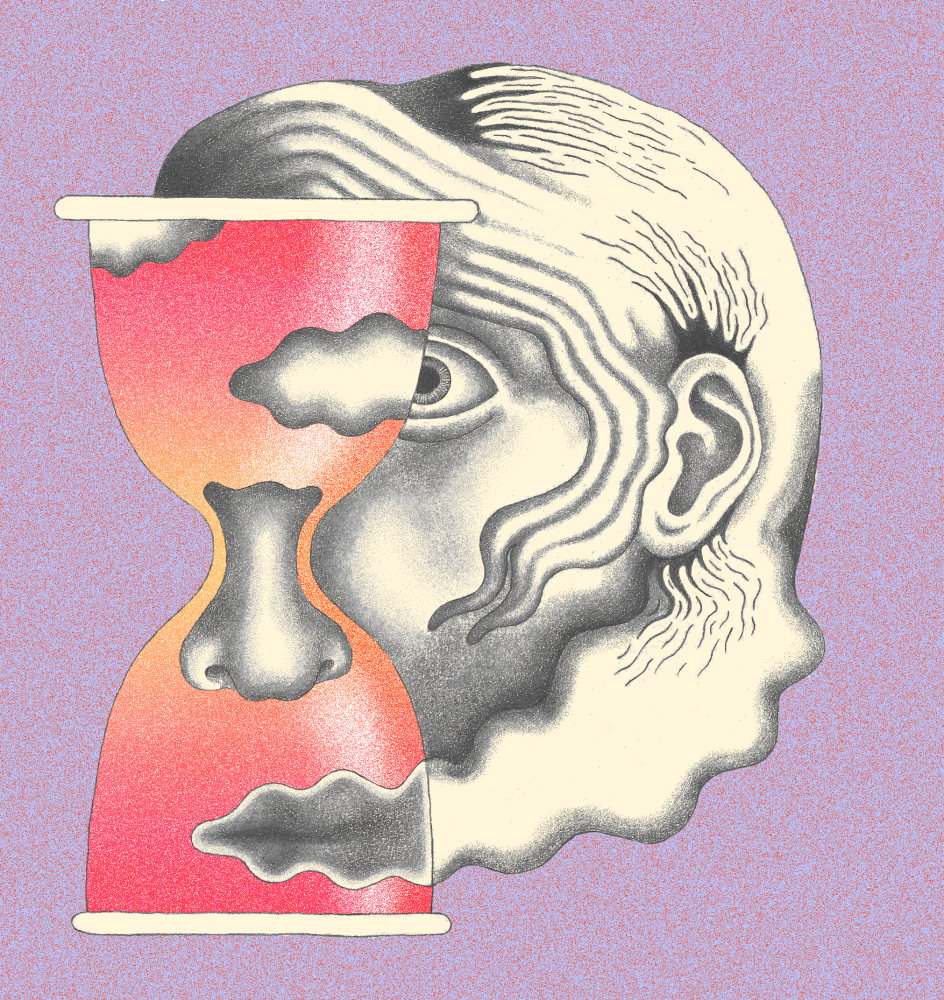
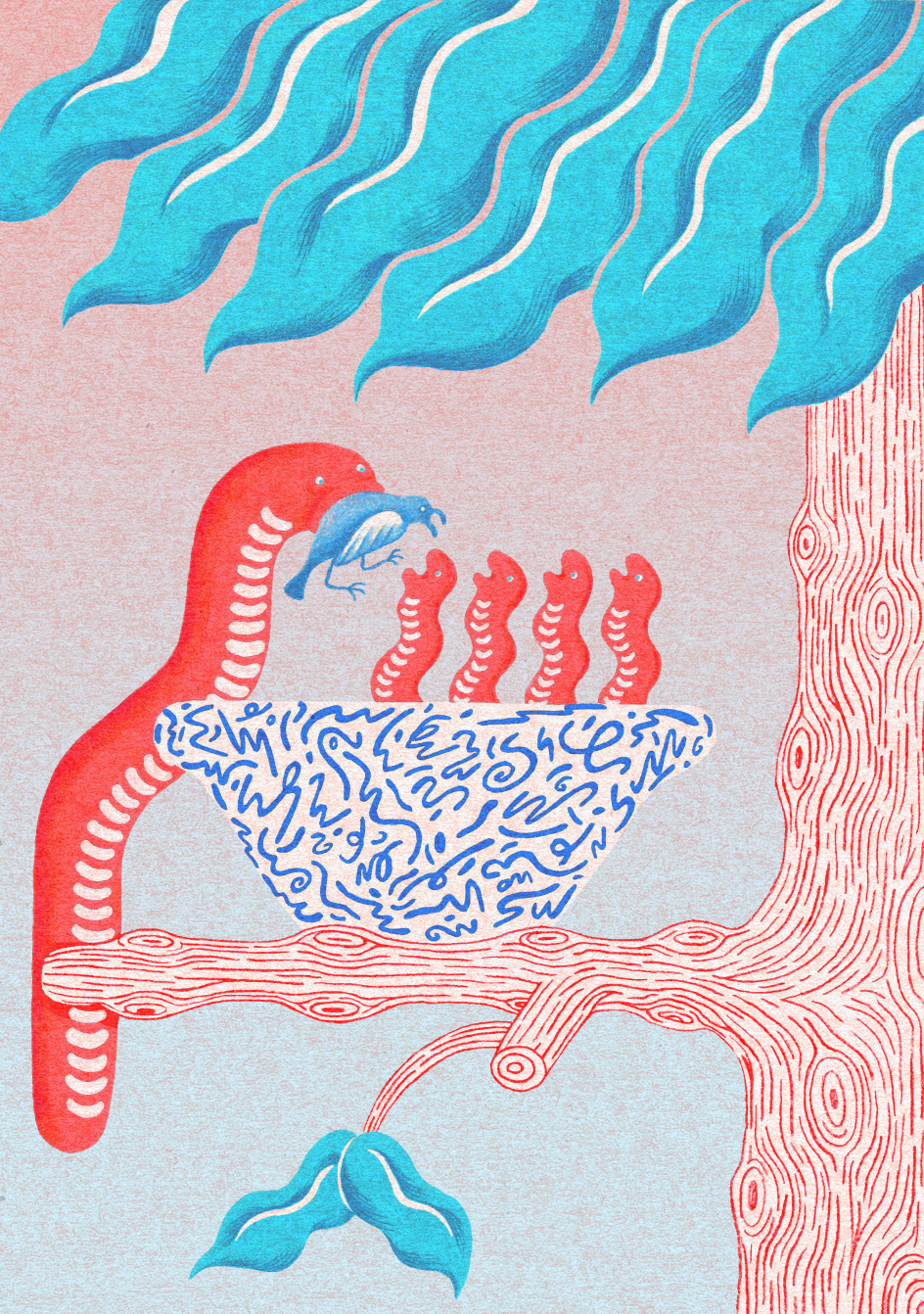
"Putting a portrait in the heavily decorated frame in this way reminds me of religion and the way it tends to mystify. Putting the seemingly formless shapes, there was no coincidence. I think that refers to the glitchy, shapeless aesthetic that currently circulates in pop culture. I think the head looks a bit like one out of a '70s comic, but it looks desperate or devoid of any will to do anything."
Like this and with all of her works, Hannecke's illustrations are a place of deep contemplation and an invitation for us all to take a moment to stop and think.









](https://www.creativeboom.com/upload/articles/86/862919952c0ad18439004228895a431dc6e45ffc_732.jpg)




](https://www.creativeboom.com/upload/articles/b2/b2766633bc2fe360d0c3ab5571804bf1ff257e5d_732.jpg)
